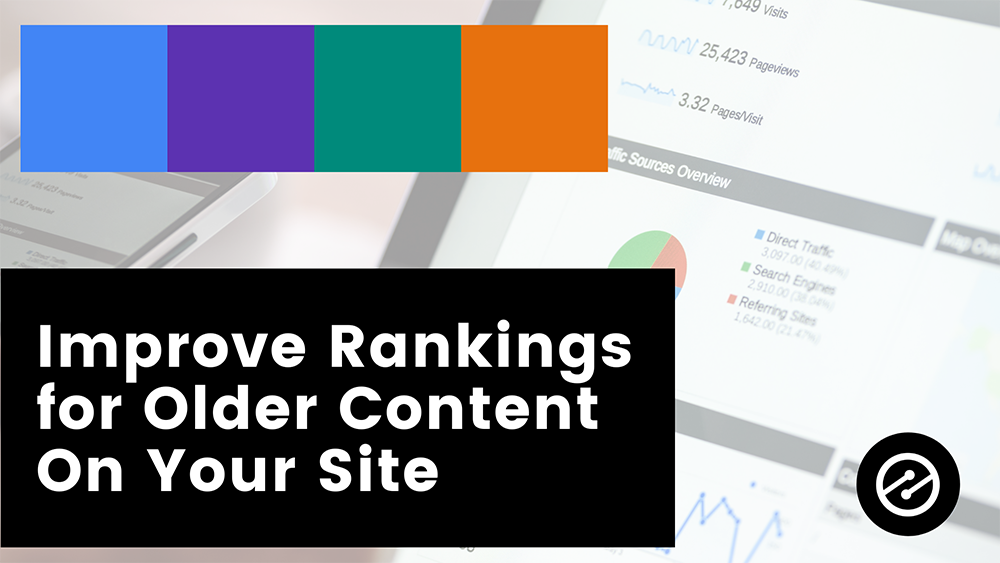Giving your readers more reasons to come back to your site doesn’t always mean writing brand-new articles. In fact, sometimes it’s better for your SEO, traffic, and revenue streams to simply optimize your existing content.
Every year, the number of publishers who choose to update their existing content increases. The result? These bloggers that augment older content are three times more likely to improve rankings for that content.
This might be surprising to a publisher who’s used to simply writing more and more original content. They might wonder – how is this possible?
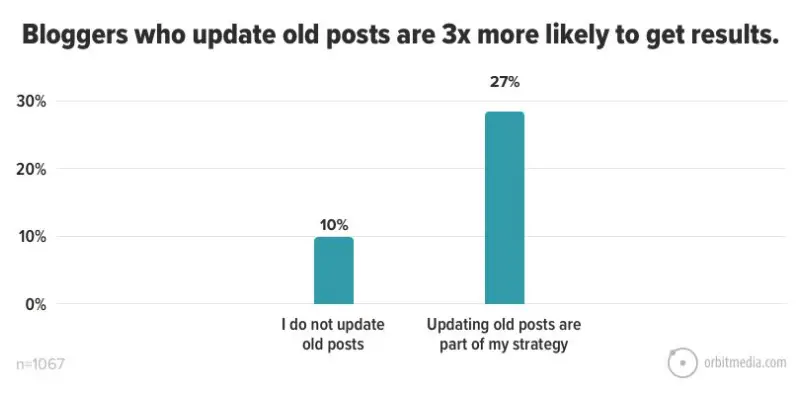
One of the primary reasons this strategy works is that you’ve already researched the data and information for your post – no need to spend hours researching new content and writing about it. Optimizing your older posts allows you to expand on them, improving the quality of the content. Simply put, it’s easier to expand upon existing content than it is to make new content from scratch.
Another reason this strategy works is that you know the content has the potential to rank highly on Google and other search engines because it has already ranked well in the past. Bolstering and augmenting your content with updated information will help the article rank even higher in search engines, saving you countless hours creating original content (that might not even rank that highly for SEO).
Below, we’ll cover how you can improve your older contents’ ranking just by giving it a little TLC.
What pages do I need to update to rank higher?
The most effective article optimization is always backed by data, not just how you feel it should be. You can use both Ezoic’s Big Data Analytics and Google Analytics to look at your old posts, identify which ones are most primed to be optimized, and how to do so.
To start, look at the pages of your website that almost rank for page one. These are the articles that have the most potential because they likely just need a little bit of work to get them on page one.
We’ll be using the Google Search Console to complete this process.
To begin, click on “Search results” on the left-hand side, then click “Date.” We’re going to look at the data from the last six months. Then, we’re going to sort by the highest position and scroll until you see a blog post at position 11. These are articles that just barely missed the cut of being on the first page.
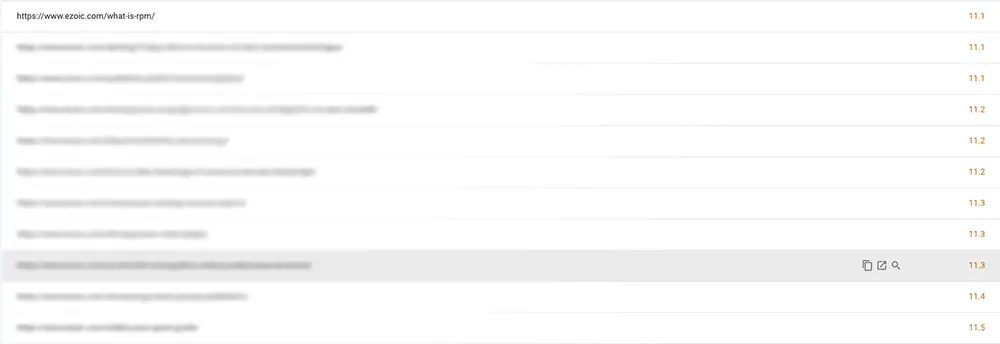
Second, look at your pages that used to get a lot of traffic but decreased in views over time. These posts are perfectly suited to see a resurgence in views after just a little work on your end.
Click on “Date” and then “Compare.” We’ll be comparing the last three months to the same time period the year before.
If we sort by “Clicks Performance,” we can see that our article has seen almost 2,000 fewer clicks on next-gen formats than the same time last year. This blog would be a great place to start.
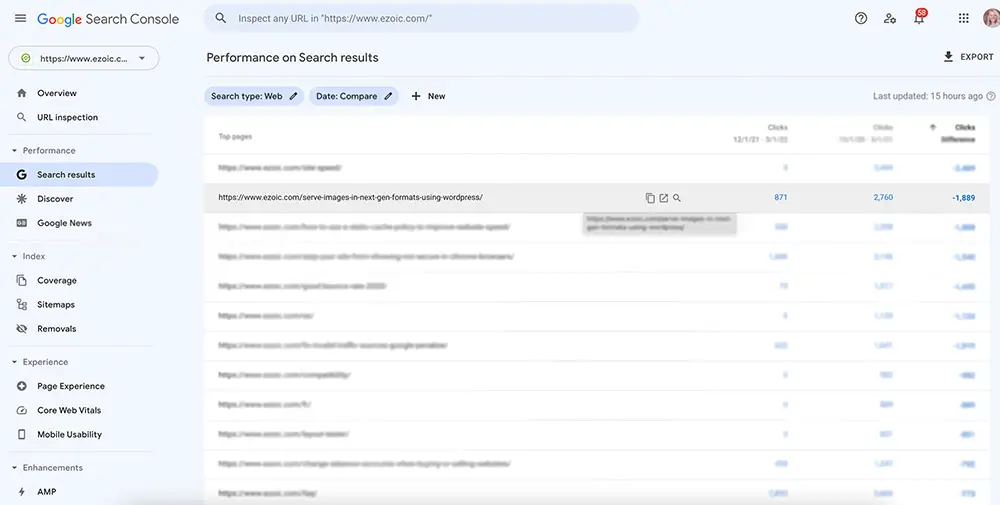
Third, consider blog posts that have a high impression count but low click rate. Some of these articles may simply just need an updated meta description update (more on that in a minute). Look at the last 28 days’ performance and sort by average CTR (click-through rate). The ones with the lowest percentage (far right) are ones that Google is ranking but that people aren’t clicking on:
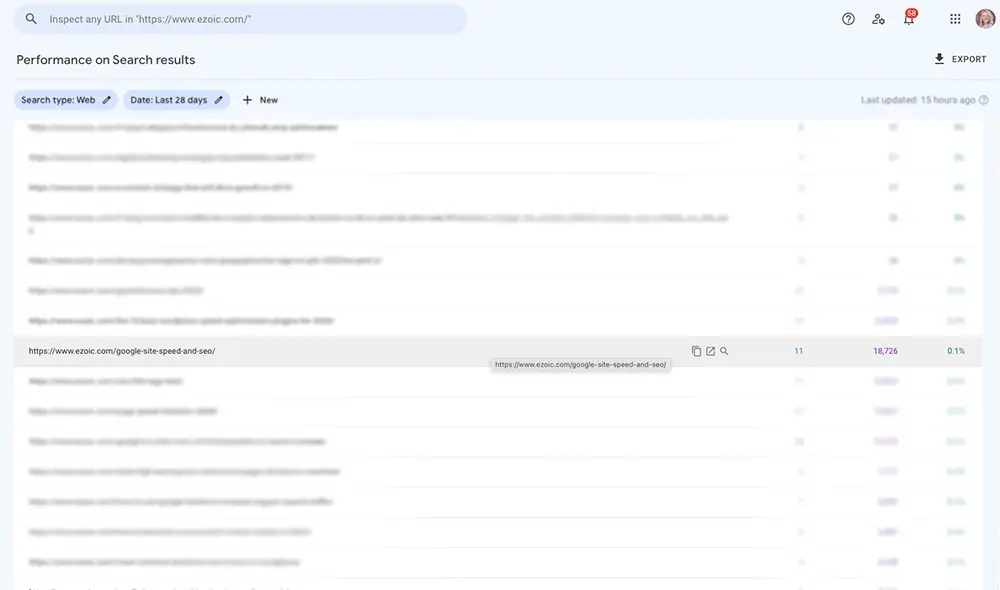
All three of these articles will be optimized in a similar matter, starting with keywords.
What you need to know about keyword research and search volume
After we know what articles are best suited to be optimized, we need to look at keywords. Here’s a helpful blog post that includes in-depth information you need to find the right keywords to target through Moz and SEMrush, but we’ll be doing this a little differently using Google Search Console.
In this example, we’ll just be looking at one of the articles from the section above, but you can do this with literally all the articles you found that either used to rank well, are almost on the first page, and those that rank but aren’t clicked on.
Now, let’s look at our blog on next-gen formats. To begin, I open the page in Google Search Console and click on “Queries.” This will show us the top queries and keyword searches that get people to this webpage.
Keywords outside of your top five or with a high amount of impression are keywords that you can focus on for that article. In this example, the phrase ‘serve images in next-gen formats’ has a high impression volume, so we could go back and make sure that long-tail keyword is used more heavily in the article.
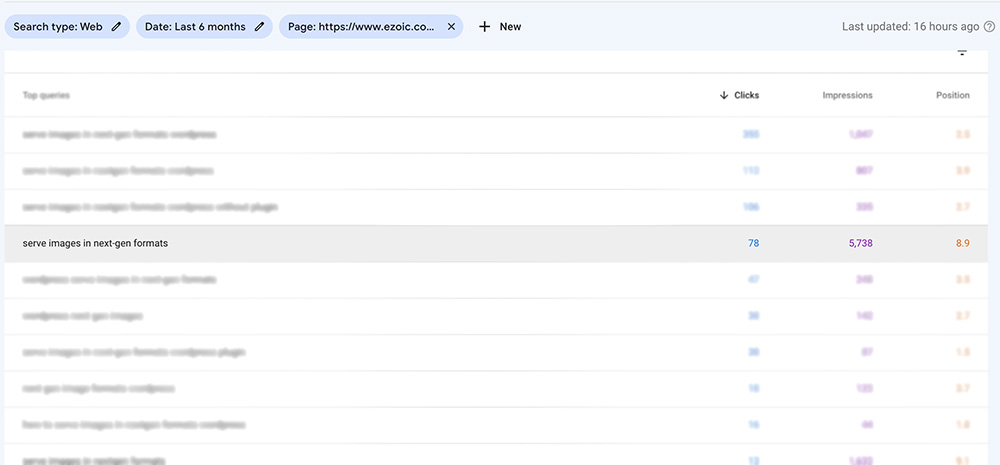
You can do this for each of the articles you pulled previously to check and see what queries you could be ranking better for, which would help increase the ranking of that article.
How else can I optimize my old content to improve ranking for my site?
After you look at keywords, it’s time to consider other ways to update your content that will also help it rank better. One of these ways is to look at the information in the article and consider if it is outdated or not. Ask yourself – has there been new research published that would be beneficial to include? Are parts of your content outdated and need removed or altered?
Additionally, you should look at important user metrics like title tags and meta descriptions. Title tags are basically the HTML code that indicates the title of your article, which is important for search engines and will show up in search results for users to see. It’s not 100% guaranteed to get your article on page one (Google is always notoriously private about the way their algorithm works), but you still want your title to be informative or catchy and to include one of the keywords you’re trying to rank for. With Ezoic’s Title Tag Tester, you’re able to easily test different title tags and see which one ranks better.
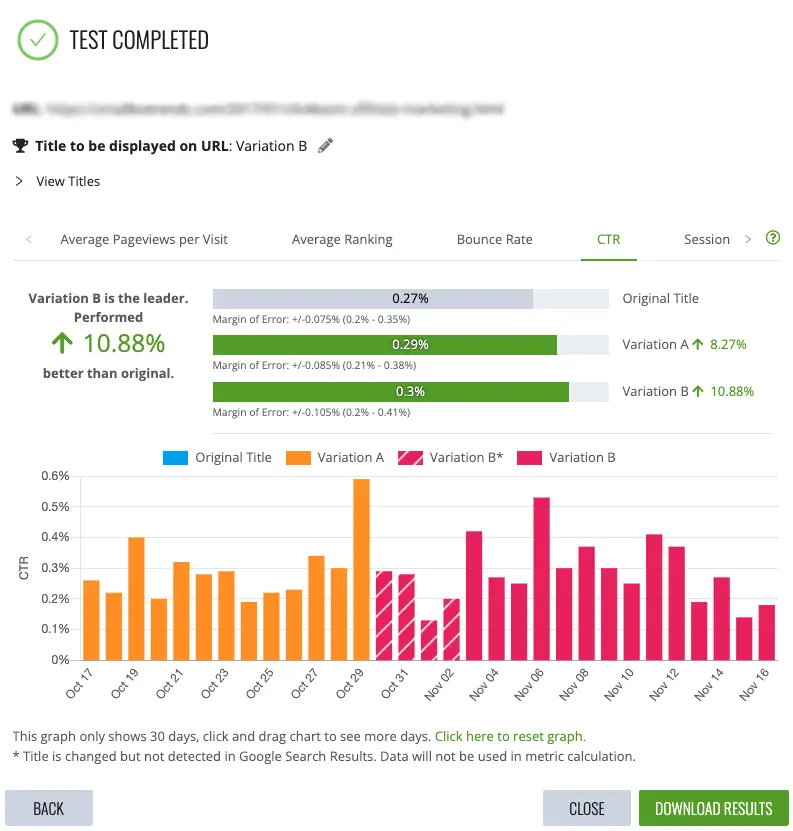
Meta descriptions are the sentences underneath a title tag in a search result that gives the user a brief description of what the content is about. This is really important because it is the user’s first impression of your content and can determine whether someone wants to read more or move on to the next result. (Pro tip: Yoast has a good plugin for WordPress that helps you optimize not only meta descriptions but other important factors in SEO as well).
Another way to improve your older articles’ ranking is to include the updated article as a backlink in your other content. This signals to search engines that your content is so good, it’s worth sharing in other articles. Of course, ensure that you’re putting backlinks in places that are relevant.
Lastly, be sure to include media within your updated article. This can be anything from images/screenshots, videos, graphs/charts, etc. What’s great about including media is that it not only makes your content easier to digest by users, but it also improves SEO because your content will have better user engagement. Different users prefer different forms of media, and you’ll have better results if you continually give your readers alternative ways to consume your content.
Additionally, you can include alt-tags, which are basically pieces of HTML code that signal to search engines what an image is. This will help search engines index your image properly and increase the likelihood of being ranked higher. Alt-tags are also beneficial in case an image doesn’t load; instead, the alt-tag description will display so the user has an idea of what was supposed to display.
Promote your updated content
Now that you’ve updated and optimized your content, it’s time to get your content back out there to get discovered by more readers, old and new.
Share your updated content on social media to let your followers know that you have “new” content and why the article is relevant again. You can look at your analytics to see how people originally engaged with it and see if they would be willing to promote it again. Additionally, you can send the new article out to any email subscribers or followers through a newsletter or email blast.
Optimizing content is increasing in popularity because it just makes so much sense for publishers’ SEO and site performance (not to mention how little time it takes). Now that you know what content to look for, how to update it, and how to get it out to your audience, you can get to work on optimizing your older posts to get more views and revenue.
